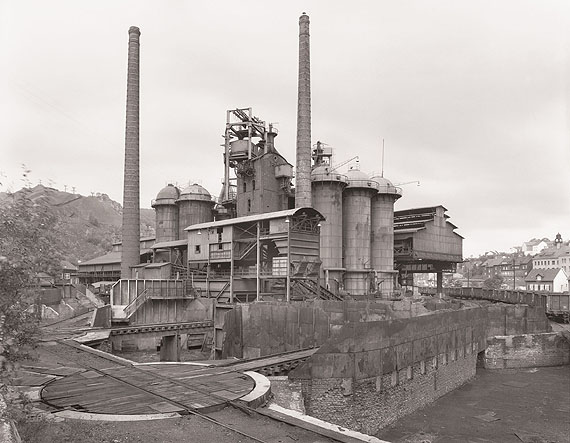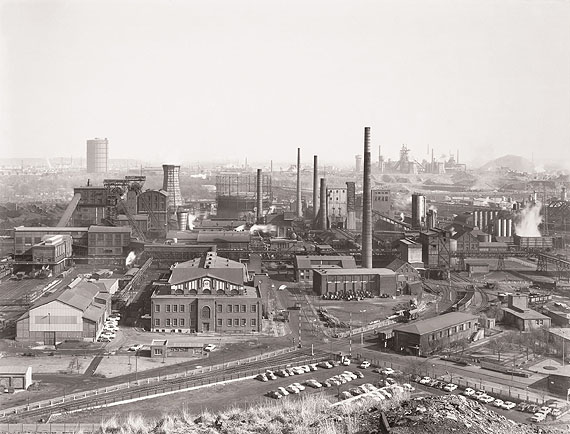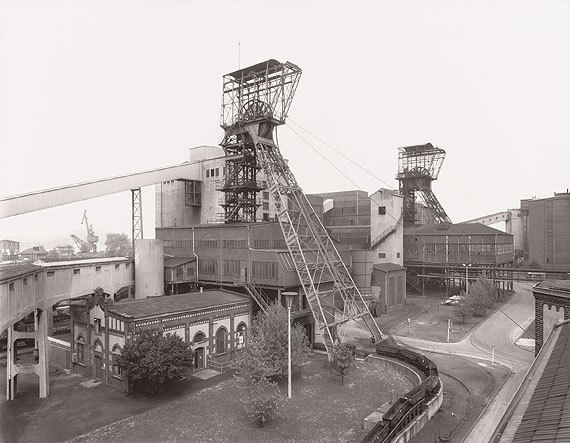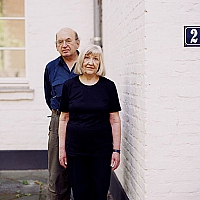
Munchner Stadtmuseum St.-Jakobs-Platz 1 D-80331 Munich Allemagne
For nearly five decades the photographer team of Bernd and Hilla Becher were working on an extensive global inventory of industrial architecture. They documented factory buildings, gas storage tanks, power distributors, shaft towers, and steel furnaces that are not part of the canon of art history but rather anonymous, functional architecture abandoned and fallen into disrepair as a result of urbanistic or economic development. Their constructs were soon recognized by art history as “anonymous sculptures” (Karl Ruhrberg). They serve to direct attention to the structural beauty of industrial utilitarian buildings that had mostly been erected by unknown architects.
Bernd and Hilla Becher’s photographic style is characterized by the precisely controlled conditions of their exposures and by an effort to achieve the greatest possible degree of unfettered objectivity when reproducing the object to be presented. Usually, they capture the buildings in frontal view, from a slightly elevated vantage point, centered, and with lighting conditions that permit an even depiction of all parts of the building and exclude dramatic light-and-shadow effects. In that manner, the buildings’ physiognomy is exposed, isolated from the environment and with virtually anatomical precision. This documentary approach is engendered by a passionate interest in the object and an awareness of the historic antecedents by Karl Blossfeldt, Eugène Atget, Albert Renger-Patzsch, and Walker Evans. Its goal is the best-possible readability and comparability of the building structures. Generally, the artists Bernd and Hilla Becher refrain from incorporating staged or manipulated elements into their works.
For the very first time ever, this selection of pictures of mines, mills, and ironworks on display focuses on the genre of industrial landscape, i.e., not a representation of individual architectonic objects but the placement of entire heavy industry facilities and complexes within their urban and natural environments. Although the Bechers had been creating such “panoramic views” of industry since the very beginnings of their work, they were initially holding them back from public view. It was not until their typological series of free-standing buildings had met with general acclaim that they decided to exhibit and publish their industrial landscapes which show the interrelationships of production facilities, housing areas, and nature.
A large number of the images in Mines and Mills were taken in the Ruhr industrial area. They are supplemented with photographs from the Siegerland district, Great Britain, France, and the USA, providing a comparative view that makes it possible to detect a common language of industrial architecture which developed over the course of a century, independent of regional or national boundaries.

Zeche Concordia, Oberhausen, Ruhrgebiet, D 1967 © 2010 Bernd and Hilla Becher / courtesy Schirmer/Mosel.

Zeche Friedrich der Große, Herne, Ruhrgebiet, D 1978 © 2010 Bernd and Hilla Becher / courtesy Schirmer/Mosel.
Now that iron smelting as an industry has all but departed from the Ruhr industrial area and coal mining in Europe is coming to an end as well, this collection of impressive pictures represents a somewhat nostalgic retrospective of a bygone era of industrial history. Although today many of these facilities are protected as historical monuments - another result of Bernd and Hilla Becher’s photographic work – a great number of industrial facilities had previously been completely destroyed and torn down. The formerly thriving industrial landscape left behind barren areas that have not yet been put to new use. This makes the Bechers’ pictorial landscapes even more impressive. On one hand, they stand as silent monuments memorializing the Ruhr area’s past; on the other hand, they represent a visual argument for the need for structural change in the entire region.
This exhibition was conceptualized by Hilla Becher in cooperation with the Josef Albers Museum Quadrat center in Bottrop and Heinz Liesbrock, its director. A book with more than 150 duotone illustrations and narration by Heinz Liesbrock is available for this exhibition. It is produced by the Schirmer/Mosel Verlag publishing house and can be purchased at the museum for 34 €.
Vignette : Charlottenhütte, Niederschelden, Siegerland, D 1963 © 2010 Bernd and Hilla Becher / courtesy Schirmer/Mosel.

